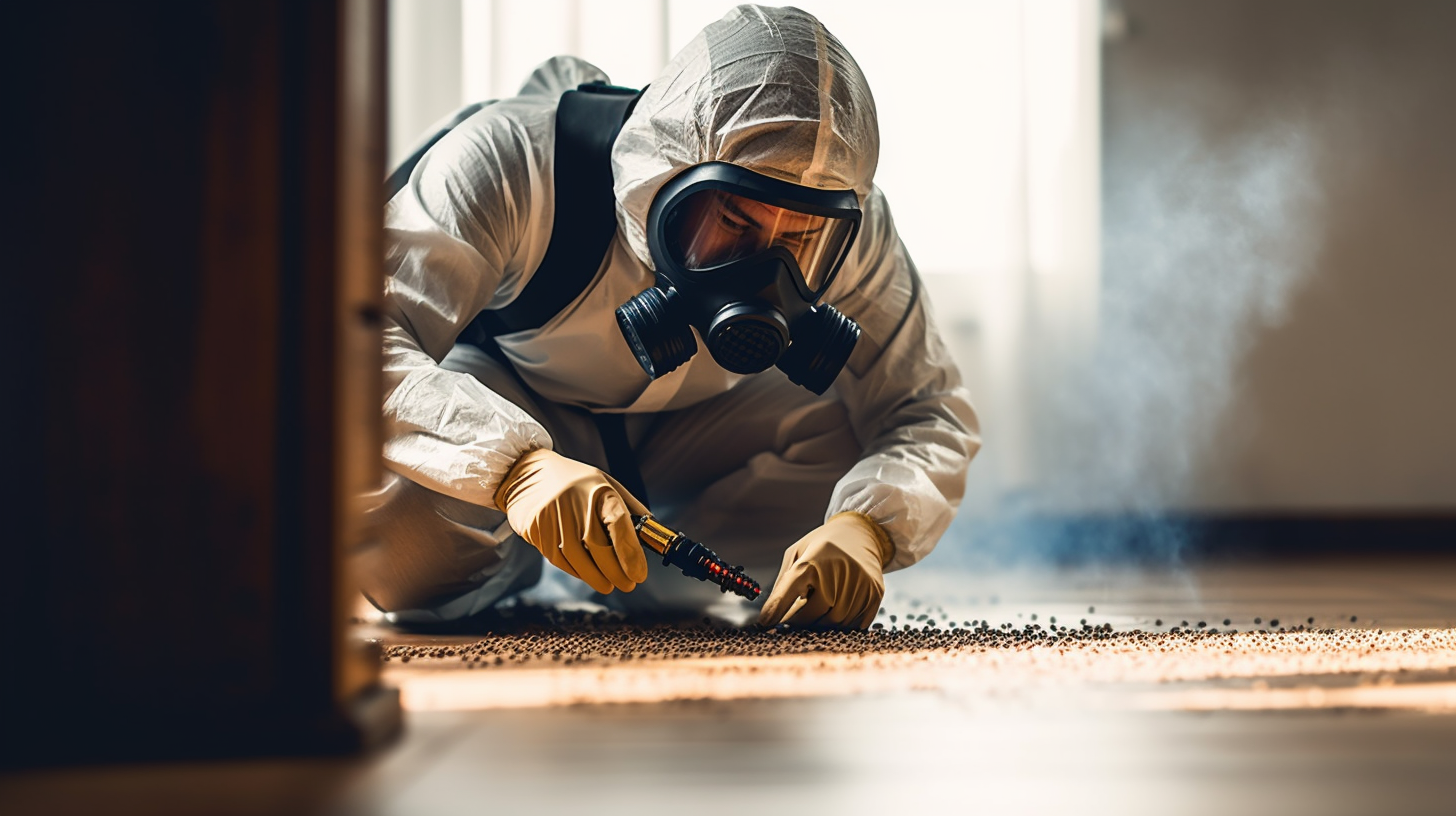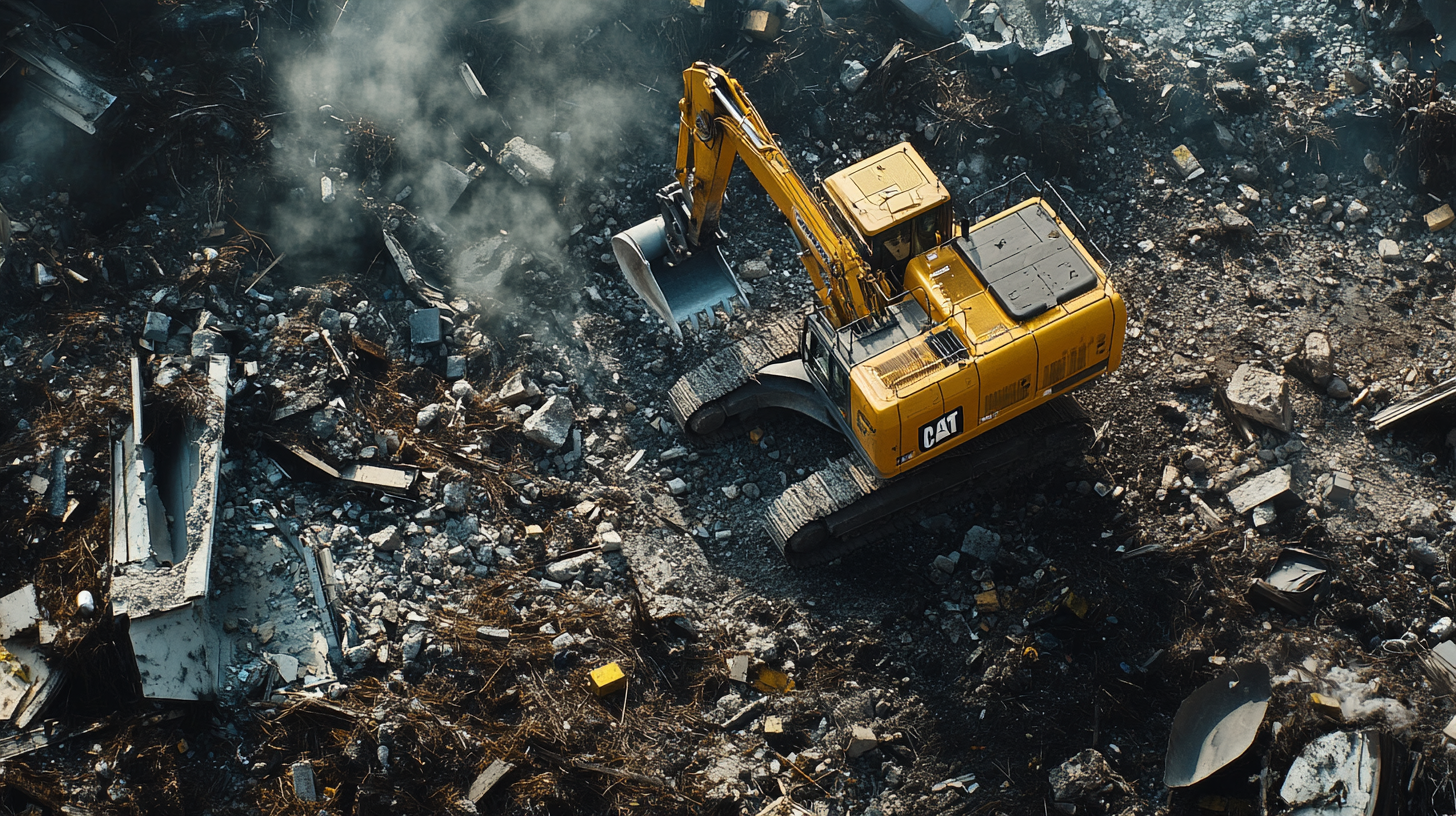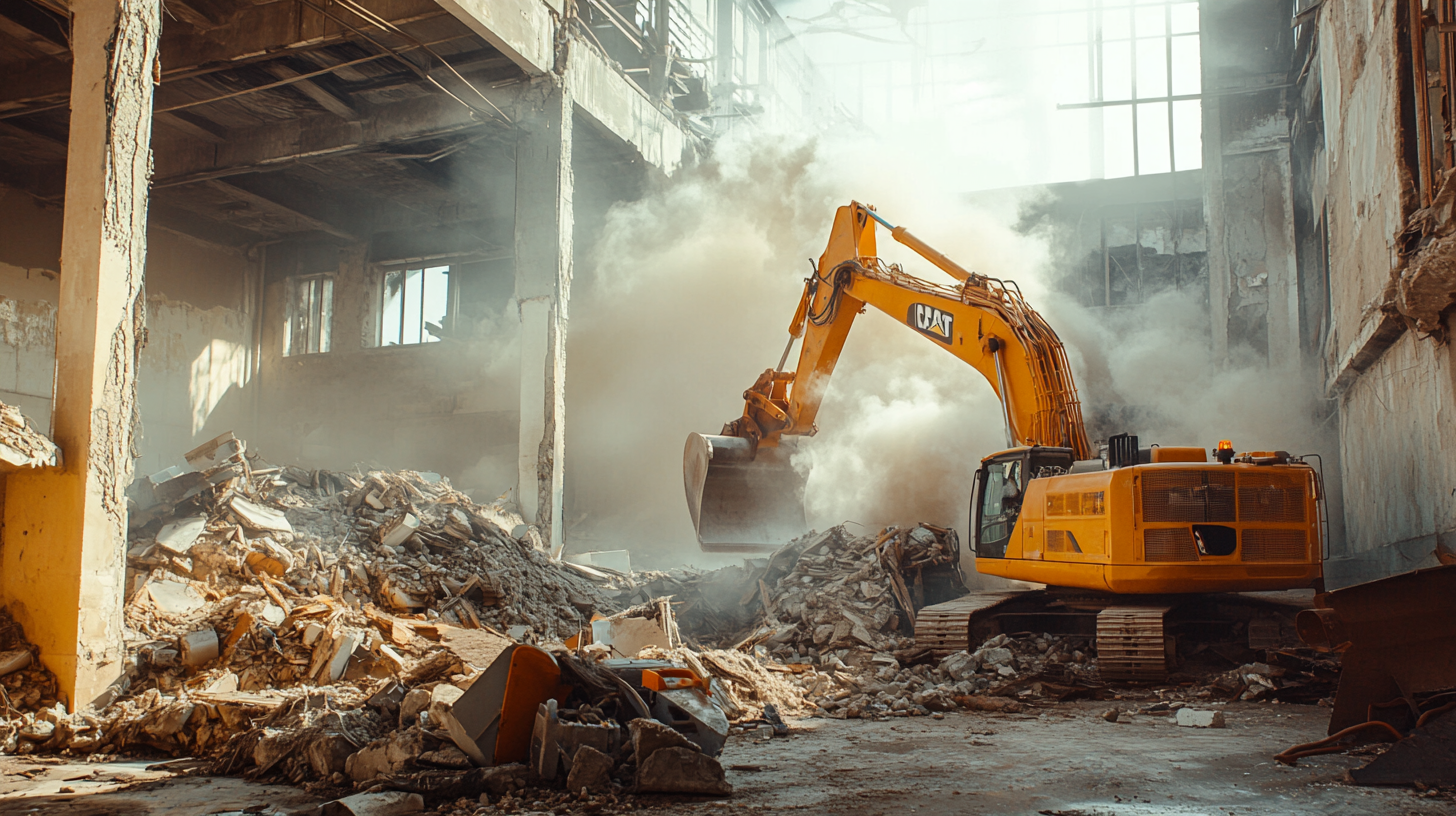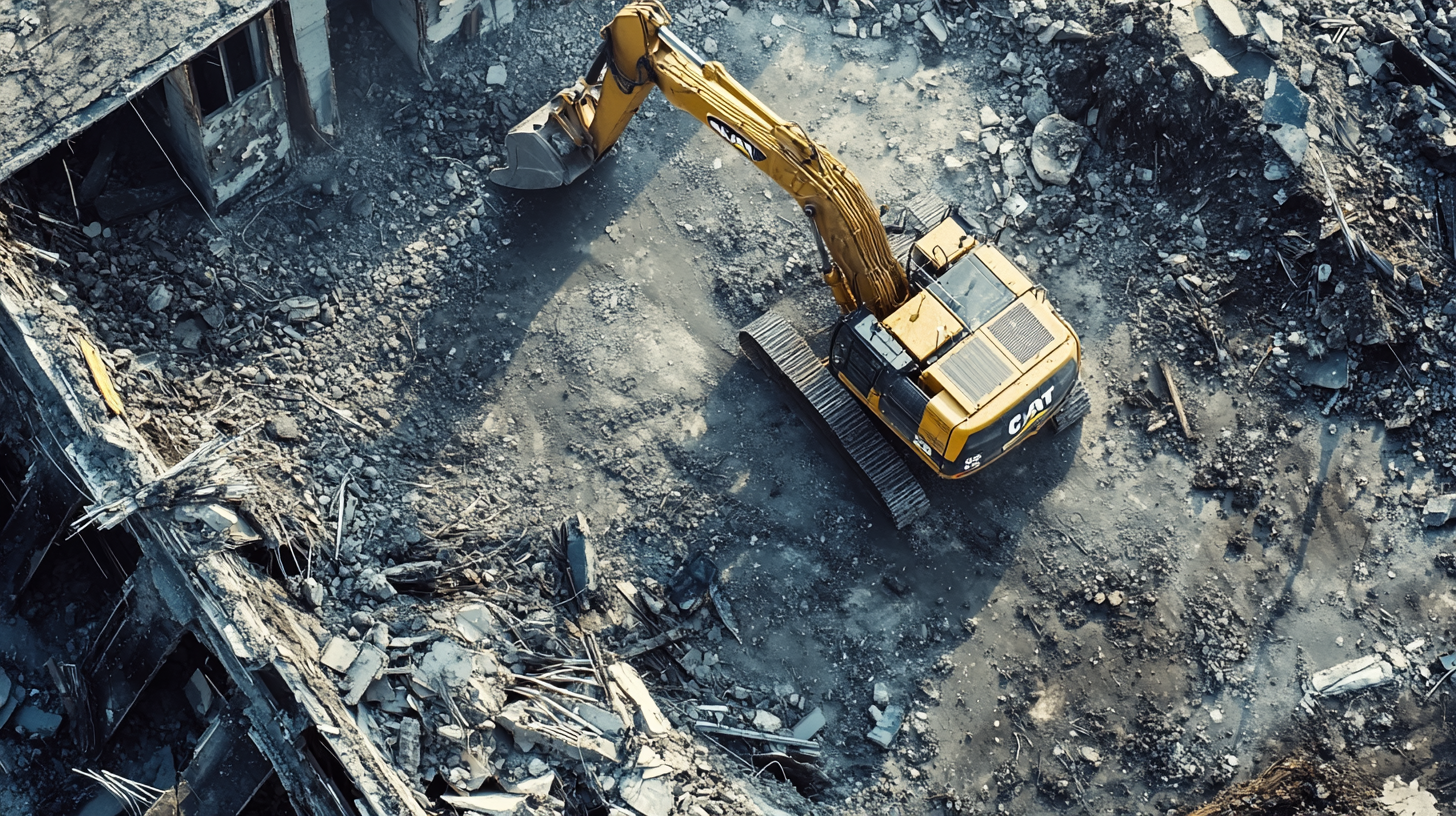
DIY pest control methods are often seen as a quick, low-cost solution to household pest problems. From homemade sprays to over-the-counter chemical treatments, many believe they can manage pest infestations with little more than online advice and store-bought products. However, this approach can come with hidden dangers that pose significant risks to both health and property. Misuse of pesticides, lack of proper pest identification, and inadequate treatment methods can lead to persistent infestations, environmental harm, and serious safety concerns, including exposure to toxic chemicals.
This blog delves into the dangers associated with DIY pest control efforts, highlighting the common pitfalls that homeowners encounter. It also outlines the key indicators that signal when professional pest control services should be enlisted. By recognizing the limitations of DIY methods and understanding the benefits of professional expertise, homeowners can make informed decisions that prioritize the safety of their families and the integrity of their homes. Whether it’s identifying complex infestations or safely handling hazardous chemicals, knowing when to call a professional can prevent long-term damage and ensure effective pest management.
Understanding the Risks of DIY Pest Control
DIY pest control often seems like a straightforward, budget-friendly option when faced with unwelcome pests. However, without the proper knowledge and expertise, these methods can expose homeowners to significant risks. This section explores common DIY approaches and the potential dangers they present, emphasizing why professional pest control is often the safest and most effective solution.
Common DIY Pest Control Methods
Many homeowners turn to easily accessible solutions when attempting to manage pest infestations on their own. Below is an overview of popular DIY methods and the potential pitfalls associated with each:
- Store-Bought Sprays and Traps: Chemical sprays and bait traps are readily available and often advertised as quick fixes for various pests. While they may provide temporary relief, these products rarely address the root cause of an infestation, leading to recurring issues. In addition, improper placement or use of these traps can cause more harm than good, especially when targeting the wrong species.
- Home Remedies: Natural remedies such as vinegar, essential oils, and boric acid are popular DIY options for those seeking eco-friendly alternatives. However, these solutions often lack the strength or precision needed to fully eliminate pests, particularly in severe infestations. Additionally, they may only repel pests temporarily without solving the underlying problem.
- Incomplete Pest Removal Methods: DIY solutions often focus on symptomatic treatment—such as setting traps—without addressing the root cause of the infestation, like entry points, nesting areas, or underlying environmental factors. This approach can lead to a false sense of security while the pest problem persists and spreads, potentially causing further damage.
Why DIY Pest Control Can Be Risky
While DIY methods may seem simple, they often come with serious risks, particularly when it comes to misidentification and the improper use of chemicals. Here are the key reasons why DIY pest control can be hazardous:
- Lack of Knowledge About Proper Pest Identification: Accurate pest identification is crucial for effective control, as different pests require different treatment methods. Misidentifying the pest can lead to the wrong approach being used, wasting time and resources while allowing the infestation to worsen.
- Misidentifying Pests and Using the Wrong Treatment Method: Each pest species requires specific control measures. Using the wrong method—whether it’s the wrong bait, trap, or pesticide—can be ineffective or even exacerbate the problem, allowing pests to spread to new areas of your home.
- Incomplete Eradication Leading to Further Infestations: DIY solutions often only address visible pests without reaching their nests or colonies. This incomplete eradication allows pests to multiply and spread, leading to larger infestations that become more challenging to control.
- Incorrect Handling of Chemicals: The improper application of pesticides is one of the most common and dangerous mistakes in DIY pest control. Pesticides contain toxic chemicals that, if not handled correctly, can harm both humans and pets. Inexperienced users may apply too much or too little, either making the treatment ineffective or putting household members at risk.
- Overuse or Improper Application of Pesticides: Excessive or improper use of pesticides can have serious health consequences, especially when used in enclosed spaces. These chemicals can linger in the air or settle on surfaces, leading to long-term exposure that may result in respiratory issues, skin irritation, or more severe health risks.
- Exposure to Harmful Chemicals Without Proper Protective Equipment: Many DIY pest control methods involve the use of hazardous chemicals without the necessary protective gear. Without gloves, masks, or eye protection, individuals risk direct exposure to toxins, which can lead to acute poisoning or other health complications.
Health Hazards Associated with DIY Pest Control
DIY pest control methods, while seemingly simple and cost-effective, can pose significant health risks, especially when it comes to handling toxic chemicals without the proper knowledge or training. This section explores the various health hazards that arise from DIY pest control efforts, particularly the dangers posed to individuals and the home environment.
Exposure to Toxic Chemicals
One of the most significant dangers of DIY pest control is the improper handling and application of chemical pesticides. Without the expertise required to manage these substances safely, homeowners expose themselves and their families to unnecessary risks.
- The Risks of Handling and Applying Chemical Pesticides Without Training: Many pesticides contain harmful chemicals that require careful handling, including the use of protective gear and proper ventilation. Inexperienced individuals may unknowingly apply these chemicals in unsafe amounts or in ways that increase exposure to dangerous toxins.
- Acute Health Risks: Immediate side effects from handling pesticides improperly include skin irritation, respiratory issues, and, in severe cases, poisoning. These reactions can occur from direct contact with chemicals or inhaling fumes, especially in enclosed areas where ventilation is poor.
- Long-Term Exposure Risks: Prolonged or repeated exposure to certain pesticides can have more severe health consequences. Some pesticides contain potential carcinogens or neurotoxins that may cause long-term damage, including cancer or harm to the nervous system. Without proper precautions, DIY pest control can lead to chronic health issues that develop over time.
DIY Pest Control and Children or Pets
Children and pets are particularly vulnerable to the hazards of DIY pest control, as their smaller size and developing bodies make them more susceptible to the harmful effects of pesticides.
- The Dangers of Pesticide Exposure to Vulnerable Groups: Children and pets are at higher risk of adverse reactions from exposure to pesticides. Chemicals can affect their developing immune systems and lead to serious health complications.
- How Chemicals Can Affect Children’s Development and Health: Pesticides used in DIY pest control may linger in the environment, where curious children can come into contact with them. Exposure to certain toxins has been linked to developmental issues, including learning disabilities and behavioral problems.
- Risks of Poisoning or Adverse Reactions in Pets: Pets are also at risk of ingesting or inhaling harmful chemicals. Dogs and cats may lick surfaces or chew on objects treated with pesticides, leading to poisoning or severe allergic reactions. Even small amounts of pesticide can be toxic to pets, causing symptoms like vomiting, seizures, or, in extreme cases, death.
Contaminating Your Home Environment
DIY pest control treatments often leave behind toxic residues that can contaminate the home environment, leading to unintended health hazards for all occupants.
- The Potential for DIY Treatments to Leave Behind Toxic Residues: Improper application of pesticides can result in chemicals settling on household surfaces, particularly in areas where food is prepared or eaten. These residues may persist for days or even weeks, posing ongoing risks of exposure.
- Inadequate Ventilation or Cleaning After Using Chemicals: Many DIY pest control efforts take place without proper ventilation, allowing harmful fumes to accumulate in the home. Additionally, inadequate cleaning after the application of pesticides can leave toxic substances on countertops, floors, and other high-traffic areas, increasing the chances of accidental ingestion or skin contact.
- Risk of Chemicals Settling on Surfaces Where Food is Prepared or Eaten: Pesticides can easily contaminate kitchen surfaces, dishes, and utensils if not properly contained or cleaned up. This contamination poses a direct risk to anyone who eats or prepares food in the home, increasing the likelihood of ingesting harmful chemicals.
DIY Pest Control May Lead to Larger Infestations
While DIY pest control methods can offer quick fixes, they often fail to address the root of the problem, allowing infestations to grow worse over time. This section examines how incomplete eradication, pest resistance, and unnoticed damage can turn a small issue into a much larger and more costly problem.
Incomplete Pest Eradication
One of the most common reasons DIY pest control fails is the inability to fully eradicate infestations. Without the proper tools and expertise, DIY efforts often only address the surface-level symptoms of a pest problem, leaving the underlying infestation untouched.
- Why DIY Solutions Often Fail to Address the Full Extent of an Infestation: DIY pest control typically targets visible pests but may miss hidden colonies or breeding areas. Pests like ants, termites, and cockroaches often establish nests in hard-to-reach areas such as walls, foundations, and attics, which DIY methods usually can’t access or treat effectively.
- Treating Surface-Level Issues While Ignoring Hidden Colonies or Nests: Many DIY solutions focus on eliminating pests found in open areas, but infestations often spread beyond what is immediately visible. Treating only the symptoms while ignoring the deeper issue allows the problem to persist and often worsens over time.
- Temporary Solutions That Result in Pests Returning Quickly: DIY treatments often provide only temporary relief. Many over-the-counter products lack the potency or precision needed to fully eliminate pests, meaning they return shortly after the initial treatment, sometimes in even greater numbers.
Pest Resistance to Over-the-Counter Treatments
Another challenge of DIY pest control is the growing resistance pests develop to common store-bought treatments. As homeowners repeatedly use the same products, pests can adapt, becoming harder to eliminate with basic DIY solutions.
- How Pests Can Build Resistance to Commonly Available DIY Products: Pests such as cockroaches, bedbugs, and certain ant species can develop resistance to the chemicals found in many over-the-counter pest control products. As these products are used repeatedly, pests evolve to survive, making them less effective over time.
- Overuse of the Same Pesticides Can Make Pests Harder to Control: Continual use of the same DIY pesticides not only fails to eliminate pests but can also make them more resilient. This overuse can lead to "super pests" that are immune to standard treatments, leaving homeowners with few options for effective control.
- Professional-Grade Treatments Are Often Needed for Resistant Pests: In cases of resistant pests like bedbugs, termites, or rodents, DIY methods are rarely sufficient. Professional pest control services use stronger, targeted treatments that are designed to break through these resistances, effectively eliminating infestations that DIY products can’t handle.
Structural Damage from Unnoticed Infestations
One of the most dangerous aspects of DIY pest control is the potential for long-term structural damage caused by undetected or improperly treated infestations. Pests like termites, carpenter ants, and rodents can cause significant damage to a home’s foundation, walls, and support structures if left unchecked.
- The Hidden Costs of Ignoring or Improperly Treating Pest Problems: DIY pest control often focuses on immediate pest removal rather than long-term prevention. Ignoring deeper infestations can lead to costly repairs down the line, especially when structural damage occurs unnoticed for extended periods.
- Termites, Carpenter Ants, and Rodents Causing Long-Term Structural Damage: Termites and carpenter ants burrow into wooden structures, while rodents can chew through insulation, wiring, and even wooden beams. Over time, these pests can weaken the structural integrity of a home, leading to expensive repairs and, in severe cases, dangerous living conditions.
- Failing to Spot the Signs of Damage Early Due to a Lack of Expertise: Without professional experience, homeowners may miss the subtle signs of a growing infestation, such as small droppings, wood shavings, or gnaw marks. By the time the damage becomes visible, it may already be extensive, requiring far more invasive and costly repairs than if the issue had been addressed early by a professional.
The Environmental Impact of DIY Pest Control
While DIY pest control may seem like a convenient solution, its environmental consequences can be far-reaching. Improper use of pesticides can disrupt local ecosystems, harm wildlife, and negatively impact the environment. This section explores the broader environmental effects of DIY pest control, focusing on the harm to wildlife and the risks of overusing non-targeted chemicals.
Harmful Effects of Pesticides on Local Wildlife
DIY pest control often involves the use of pesticides that, when applied improperly, can have unintended and harmful effects on local wildlife. The misuse or overapplication of chemicals can impact a variety of species, from aquatic life to pollinators that play a crucial role in maintaining the ecosystem.
- The Unintended Consequences of Improper Pesticide Use: Many DIY methods do not account for the broader impact of chemicals on non-target species. When pesticides are over-applied or used incorrectly, they can spread beyond the intended area, contaminating nearby soil, plants, and water sources, leading to the poisoning of local wildlife.
- Pesticides Washing Into Water Systems, Affecting Fish, Birds, and Beneficial Insects: Rainfall or improper disposal of pesticides can cause harmful chemicals to seep into nearby rivers, lakes, and streams. This runoff can devastate aquatic ecosystems, killing fish, amphibians, and other creatures that rely on clean water. Birds and beneficial insects, such as predatory beetles and dragonflies, may also be affected when they come into contact with contaminated water or prey on poisoned insects.
- Negative Impact on Pollinators Like Bees and Butterflies Due to Indiscriminate Chemical Use: Pollinators such as bees and butterflies are highly susceptible to pesticide exposure. Indiscriminate use of chemicals can reduce their populations, which not only threatens these species but also jeopardizes the health of local ecosystems and agriculture, as these insects are vital for pollinating plants and crops.
Overuse of Non-Targeted Chemicals
DIY pest control often involves broad-spectrum pesticides, which are designed to kill a wide variety of pests. However, these chemicals can also eliminate beneficial organisms that help maintain a balanced ecosystem. Overuse of such chemicals can have far-reaching negative effects on the environment.
- How Broad-Spectrum Pesticides Can Kill Both Harmful and Beneficial Organisms: Broad-spectrum pesticides are not selective, meaning they kill pests as well as beneficial species, such as earthworms, ladybugs, and predatory insects that naturally control pest populations. This can lead to a disruption in the natural balance, making it harder for ecosystems to recover from pest invasions and weakening the overall biodiversity.
- Disrupting the Local Ecosystem and Food Chain: By killing off both pests and helpful species, DIY pest control can disrupt the local food chain. For instance, when insect-eating birds or bats lose their primary food source due to pesticide use, their populations may decline, further upsetting the ecological balance. The removal of beneficial species can lead to increased pest problems in the long run, as natural predators are eliminated.
- The Importance of Using Targeted Treatments to Preserve the Environment: To minimize environmental harm, it is crucial to use targeted pest control treatments that focus only on the specific pests causing the problem. Professional pest control services often have access to specialized, eco-friendly solutions that protect non-target species and maintain the integrity of the local ecosystem. This approach helps ensure that pest control efforts are effective without causing unnecessary harm to the environment.
When to Call a Professional Pest Control Service
While DIY pest control can sometimes provide temporary relief, there are situations where professional expertise is essential. Knowing when to call a pest control service can prevent further damage, ensure your safety, and provide long-term protection from pests. This section highlights the key signs that professional help is needed, the advantages of expert services, and what you can expect when working with a professional pest control provider.
Signs You Need Professional Help
Certain indicators suggest that a pest infestation has escalated beyond what DIY methods can handle. When these signs appear, it’s crucial to seek professional intervention to avoid long-term damage and health risks.
- Repeated Infestations Despite Using DIY Methods: If you’ve tried multiple DIY solutions and the pests keep returning, this is a clear signal that your methods are only addressing surface-level issues. Professional pest control services can target the root causes of infestations and ensure more permanent solutions.
- Signs of Structural Damage or Large Colonies of Pests (e.g., Termites, Bedbugs): Structural damage, such as sagging floors, hollowed wood, or unexplained cracks, can indicate a severe pest problem, particularly with termites or carpenter ants. Additionally, spotting large colonies or infestations like bedbugs requires specialized treatments that DIY solutions can’t manage.
- Safety Concerns Due to the Presence of Venomous or Dangerous Pests (e.g., Wasps, Snakes): When dealing with venomous pests, such as wasps, snakes, or spiders, DIY methods are not only ineffective but also dangerous. A professional is trained to remove these pests safely, minimizing risk to you and your family.
The Advantages of Professional Pest Control
Professional pest control services offer several key benefits that make them more effective than DIY approaches, ensuring comprehensive solutions to even the most challenging infestations.
- Expertise in Identifying Pests and Understanding Their Behavior: Pest control professionals are trained to accurately identify the specific type of pest and understand their nesting, feeding, and breeding behaviors. This knowledge allows them to target the infestation with precision, increasing the chances of success.
- Access to Stronger, More Effective, and Environmentally Safe Treatment Options: Professionals have access to advanced tools, treatments, and pesticides that are often more potent and effective than store-bought products. They also use eco-friendly and humane options when appropriate, minimizing harm to the environment and your household.
- Long-Term Prevention Strategies to Avoid Future Infestations: Beyond just treating the current problem, professional services focus on long-term prevention. By addressing the underlying causes of infestations, such as entry points or favorable nesting conditions, professionals can help you prevent pests from returning in the future.
What to Expect from a Professional Pest Control Service
When you hire a professional pest control service, you can expect a thorough, systematic approach to pest management that targets the root of the problem and ensures lasting results.
- Thorough Inspections to Locate Nests, Colonies, and Points of Entry: A professional pest control service begins with a detailed inspection of your property to find nests, colonies, and the entry points pests use to access your home. This comprehensive assessment ensures that no hidden infestations are missed.
- Safe and Precise Application of Pesticides or Eco-Friendly Alternatives: Professionals are trained in the safe and effective application of pesticides, ensuring that treatments are targeted and pose minimal risk to your family and pets. Many companies also offer eco-friendly alternatives for environmentally conscious homeowners.
- Ongoing Monitoring and Maintenance to Ensure Pests Do Not Return: Pest control professionals provide ongoing monitoring and maintenance to ensure that the infestation has been fully eradicated and does not return. They may recommend routine inspections or preventative treatments to keep your home pest-free in the long run.
FAQs
Contact Bull City Crawlspace Today!
Bull City Crawlspace will do everything we can to ensure your experience with us is excellent.
Request A FREE Estimate
Request a Free Estimate Form
Checkout Recent Post




Got a Question? We’re Here to Help.
You can arrange an appointment or make an enquiry by phone or email, orget in touch to us via our contact form.

